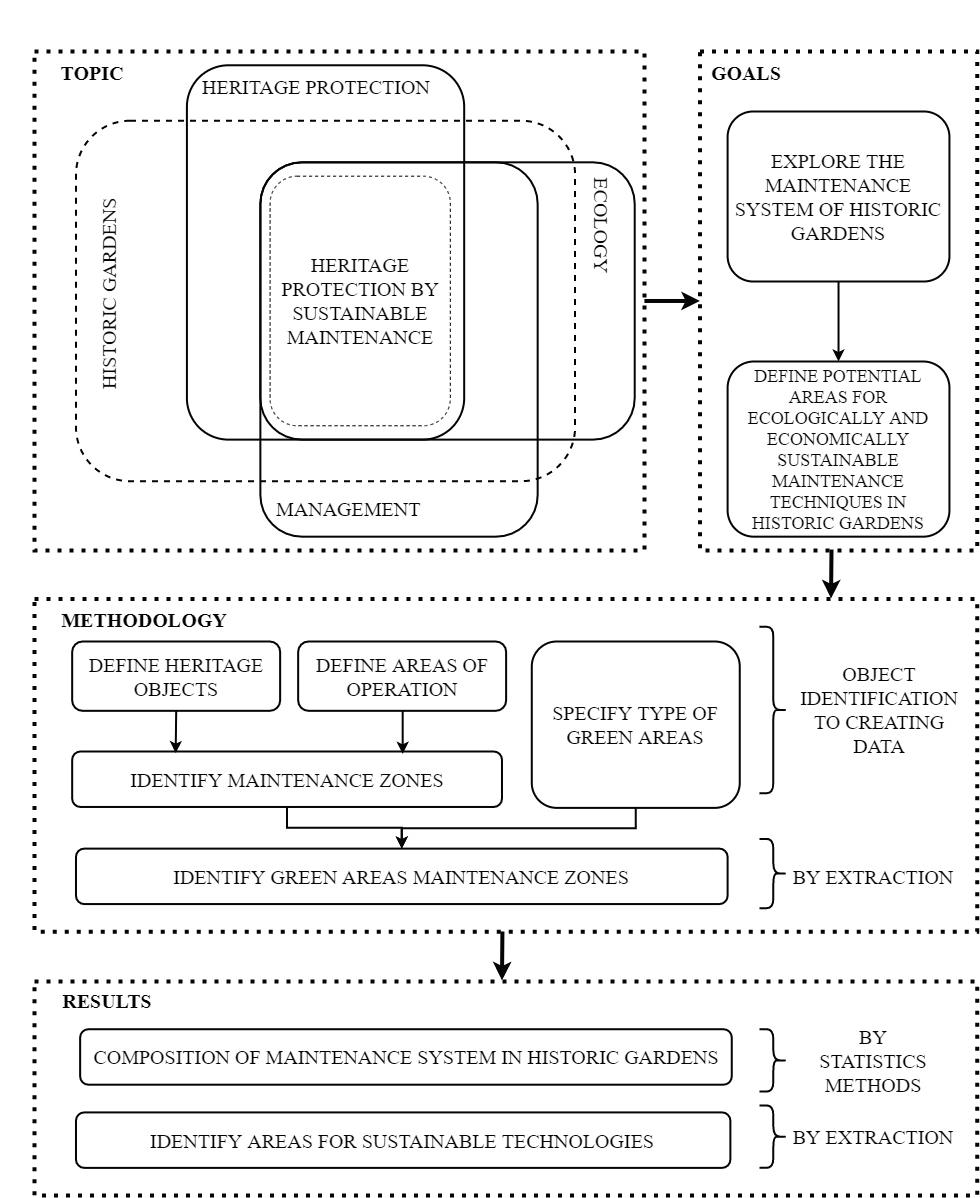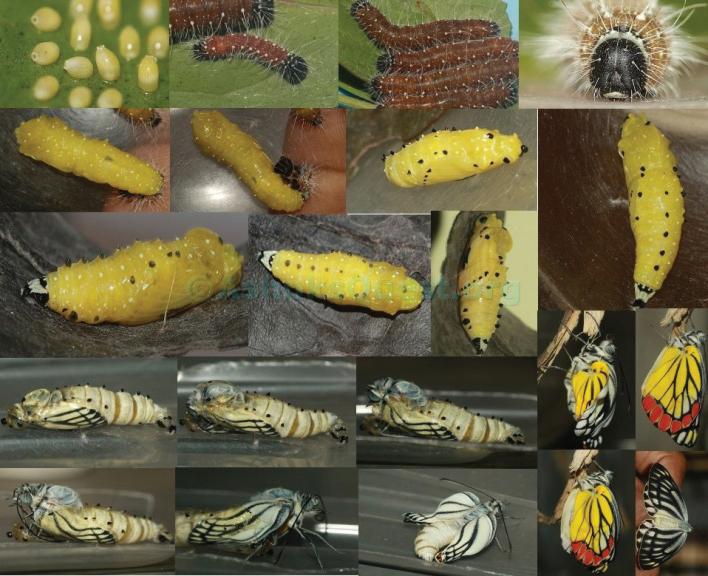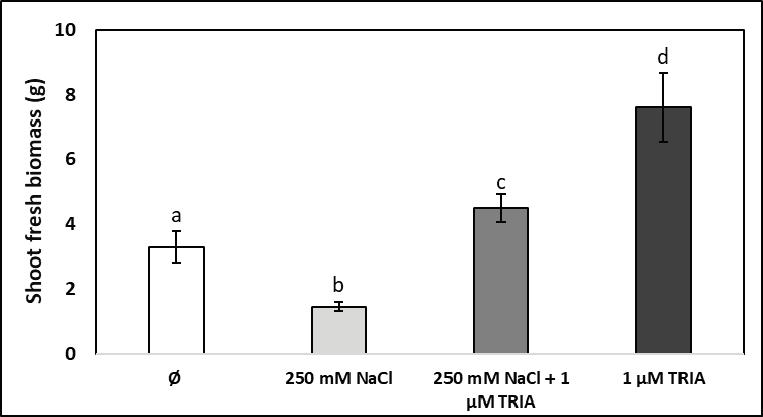
22 minute read
and metabolism of spinach
ACTA UNIVERSITATIS SAPIENTIAE AGRICULTURE AND ENVIRONMENT, 13 (2021) 65–76
DOI: 10.2478/ausae-2021-0006
Advertisement
Infl uence of triacontanol and salt stress on the growth and metabolism of spinach
Bernát TOMPA,1 László FODORPATAKI1,2*
1 Hungarian Department of Biology and Ecology, Faculty of Biology and Geology, Babeş–Bolyai University, Cluj-Napoca, e-mails: 1 tompa_bernat@yahoo.com, 2 lfodorp@gmail.com
Manuscript received 30 June 2021; revised 12 August 2021; accepted 15 August 2021
Abstract: A cost-effective enhancement of leafy vegetable yield and healthpromoting quality may be achieved by combining moderate stress conditions with the application of bioactive compounds. The aim of this work is to study how salt stress and triacontanol interact with each other in modulating vegetative growth, photosynthetic light use effi ciency, carbon dioxide uptake, and chlorophyll and carotenoid pigment content of spinach plants grown under controlled conditions. Besides stimulating metabolic processes related to growth and photosynthetic production, treatments with 1 μM triacontanol once in three days signifi cantly compensate for the deleterious effects of salt stress induced with 250 mM NaCl.
Keywords: biostimulant, carbon assimilation, carotenoids, quantum yield, salinity
1. Introduction
Environmental stress factors represent major limiting agents for crop plant growth and production, and they induce a network of several interrelated physiological changes which lead to improved tolerance through processes of metabolic acclimation leading to hardening. The metabolic plasticity of plants makes possible the biosynthesis of a wide range of bioactive compounds which confer protection against adverse environmental conditions, and at the same time they have benefi cial effects on human health upon consumption, being considered health-promoting nutraceuticals [18, 21]. Many of these bioactive compounds accumulate in plants upon a moderate abiotic stress imposed during the preharvest period, being natural constituents of the defence system. This is why controlled abiotic stresses can be used as tools for improving the health-promoting quality of fruits and vegetables. Most of these nutraceuticals are non-nutrient
plant metabolites with a specifi c antioxidative capacity, thus conferring protection against the oxidative damages caused the by overaccumulation of harmful reactive oxygen species in living organisms, induced by the action of several abiotic stress factors. These health-promoting antioxidants include several carotenoid pigments, vitamins C and E, fl avonoids, polyphenols, etc. [8, 18, 19].
One of the most frequent environmental stress factors that impairs crop production is high salinity of the soil water. It is estimated that about 33% of irrigated agricultural land are salinized, and it is expected that by 2050 around half of the croplands worldwide will become affected by increased salinity [10, 19]. In plants, salt stress has a short-term and a long-term component. Short-term effects are related to an osmotic imbalance due to impaired water uptake by the root system, and because of turgor loss they result in an inhibited growth of young organs. These effects may be counteracted by osmoregulation, while the synthesis of high amounts of compatible solutes consumes a large amount of metabolic energy, and this also contributes to growth reduction under high salinity. After a longer period of exposure to salt stress, accumulation of excessive amounts of sodium ions exerts an ionic toxicity because sodium inhibits several enzymes which function with potassium and because due to uptake competition sodium impairs mineral ion homeostasis, e.g. through potassium and calcium defi ciency. These effects may be reduced by sequestration of sodium ions in the vacuoles or by their exclusion from the cytosol and cell organelles. Due to the accumulation of toxic amounts of different reactive oxygen species which overcharge the antioxidative defence system, an associated consequence of high salinity is oxidative stress [3, 5, 19].
Natural biostimulants as modulators of life processes in plants are promising alternatives to cope with yield losses caused by environmental stress. They promote plant growth and improve crop productivity without negative impacts on the environment. Their application allows the reduction of use of chemical fertilizers and pesticides, and crop production may be enhanced without genetic manipulations. Because they act as triggers for the plant’s natural defences, only small amounts are needed to increase stress tolerance [1, 4]. From among the various biostimulants, natural pure active compounds present advantages over extracts or other mixtures because their action mechanisms can be determined easier [7]. Triacontanol, a wax constituent of the plant cuticle, is such a natural biostimulant with still unelucidated action mechanism. It has a well-demonstrated role in overcoming environmental stresses such as drought, extreme temperatures, salinity, heavy metal toxicity, or acid mist [12, 20, 22]. Even under normal developmental conditions, in several crop plants and medicinal plant species, triacontanol stimulates growth, the activity of certain enzymes (e.g. nitrate reductase, carbonic anhydrase), mineral nutrient acquisition, fruit yield, and essential oil production. Some evidence suggest that it is able to specifi cally upregulate certain genes in the plant cell genome, genes which
encode for important enzymes and for metabolic products involved in protection against abiotic stress factors [11, 16].
The aim of this study is to reveal interactions between salt stress and triacontanol in the physiological processes of spinach plantlets in order to improve growth, metabolic parameters, and content of health-promoting substances when high salinity impairs developmental conditions. The main question to be asked is whether the application of micromolar amounts of triacontanol results in stimulation of growth and photosynthesis and whether it is capable to counteract or to reduce deleterious effects of salt stress. The presumption is that triacontanol acts as a chemical signal that triggers specifi c reactions in plants [11], resulting in the stimulation of physiological processes and the enhancement of defence mechanisms under environmental stress conditions. A better knowledge of these effects may be applied in the optimization of crop production and quality for leafy vegetables. There is no available information in the literature about how spinach plants will react metabolically to triacontanol treatment and to the interaction of triacontanol with high salinity stress, which is the main reason why spinach was chosen as the biological material for the experiments besides its growing importance as a freshly consumed leafy vegetable.
2. Materials and methods
The experiments were performed with a spinach cultivar (Spinacia oleracea ‘Viking’) frequently grown in the temperate regions of Europe. As a leafy vegetable, spinach is an important source of vitamins A, B9, C, E, and K1 and of magnesium, iron, and calcium in the human diet. It is less salt-sensitive than lettuce, which is another widely cultivated leafy vegetable, its stress tolerance being much better studied than in the case of spinach [5, 9, 18]. Seeds sterilized with 3% (w/v) sodium hypochlorite were pre-hydrated for 12 hrs with distilled water and germinated in Linhard vessels. After one week, plantlets with similar size – fi ve for every experimental variant – were planted one by one in pots with perlite, watered regularly with Hoagland’s mineral nutrient solution (to avoid any nutrient defi ciency) and kept for two weeks in a growth chamber (Sanyo MLR-351H) under a photosynthetically active photon fl ux density of 330 μmol m-2 s-1 for a daily photoperiod of 12 hrs, at 20 °C in the light period and 17 °C during the dark period, the relative air humidity being maintained constantly at 65% [3, 6]. The different treatments were applied on three-week-old plantlets and lasted for 15 days, being repeated once in three days. Each set consisted of fi ve independent repetitions. Control plants were watered with Hoagland’s nutrient solution; some plants were exposed to 250 mM NaCl (p.a.) dissolved in the nutrient solution (the concentration was established in previous experiments as one that in young spinach plants induces a moderate salt stress upon long-term exposure), some other plants were treated with 1 μM triacontanol pulverized on leaves, while a fourth experimental group received simultaneously 250 mM NaCl
(in the nutrient solution) and 1 μM triacontanol (pulverized on leaves), once every three days. Growth conditions during the treatments were similar with those applied for seedling development after germination.
Because spinach is a leafy vegetable, the fresh biomass of the vegetative shoot of fi ve-week-old plants was chosen from among the various growth parameters to evaluate the infl uence of salt stress and triacontanol, separately and in combination.
Conventional and pulse amplifi cation modulated parameters of induced chlorophyll fl uorescence were determined in vivo and in situ on the fourth fully developed leaf from the base of the stem, using an FMS-2-type chlorophyll fl uoro meter (Hansatech). On leaves which were dark-adapted for 10 min before measurements, the ground fl uorescence (F0) was recorded upon application of a dim red light fl ash (0.1 μmol m-2 s-1), while maximum fl uorescence was measured during a subsequent saturating light pulse (10,000 μmol m-2 s-1 for 0.5 s). Afterwards, the leaves were continuously exposed to actinic light of 800 μmol m-2 s-1, and the steady state fl uorescence (Fs) was measured. A second saturating white light fl ash was used to determine the modulated maximum fl uorescence (Fm’) in the light-adapted state [14, 17]. From among the several registered and calculated parameters of the induced chlorophyll fl uorescence, the effective quantum effi ciency of photosystem II, i.e. ΦPSII = (Fm’ – Fs) / Fm’ was used to evaluate the impact of treatment on the energetic performance of the light reaction of photosynthesis in the thylakoid membrane system of chloroplasts. This parameter refl ects the proportion of the light energy absorbed by chlorophylls associated with photosystem II (PSII), which is used under the given growth conditions in photochemical reactions, which will conserve energy for being used in the carbon dioxide assimilation. Because it can give a measure of the rate of linear electron transport in the light reactions, it is considered an effi ciency marker of the overall photosynthesis [17].
Leaf gas exchange parameters related to stomatal function and to carbon dioxide assimilation were also measured in vivo and in situ, on the abaxial surface of the same leaves on which chlorophyll fl uorescence characteristics were determined, using a Ciras-2 type leaf gas exchange meter (PP Systems). In the measurement chamber, leaf temperature was maintained at 20 °C, relative air humidity was set to 65%, the carbon dioxide concentration was 400 μmol mol-1, and light intensity was 330 μmol m-2 s-1. Net photosynthetic carbon dioxide assimilation rate (Pn) was determined as an indicator of the plants’ capacity for primary biomass production [9, 23].
Photosynthetic pigments: chlorophyll a, chlorophyll b, and total carotenoids (carotenes and xanthophylls) were extracted with 80% (v/v) acetone from the same leaf blades that were used for chlorophyll fl uorescence and gas exchange measurements. 0.25 g of leaves were fi nely homogenized in 5 mL 80% acetone, the mixture was centrifuged for 10 min at 4,000 g and 4 °C, and then the supernatant was used for absorbance measurements at 480 nm, 646 nm, and 663 nm with a UV-Vis spectrophotometer (Jasco), according to [15].
The experiments and measurements were performed with fi ve independently grown plants for every treatment type, and determinations of physiological and biochemical parameters were repeated three times. Statistical data analysis was done with the R statistical package (R Core Team 2019). The Shapiro–Wilk test was used for evaluating the normality of data distribution and Bartlett’s test for the homogeneity of variances. Data were represented as mean ± standard error (SE). The signifi cant differences were determined with one-way ANOVA and Tukey’s HSD test. Values of P < 0.05 were considered statistically signifi cant.
3. Results and discussions
A. Shoot growth modulation
Salt stress induced with 250 mM NaCl in the rhizosphere signifi cantly inhibited the growth of the above-ground vegetative organs of young spinach plants (Figure 1). On the other hand, treatment with 1 μM triacontanol of non-stressed plantlets resulted in a highly increased shoot fresh biomass, which was more than twice higher as in control plants. When high salinity was combined with triacontanol addition, the bioactive compound completely annihilated the inhibitory effect of salt stress on vegetative growth and led to a moderate but statistically signifi cant increment of the shoot fresh weight in comparison with the control group. Triacontanol not only compensated for growth reduction under salt stress but induced shoot growth stimulation in plants exposed to high salinity. Because spinach is a leafy vegetable, a better growth of the above-ground shoot fresh weight ensures an increased production even in the presence of high soil salinity, and application of micromolar concentrations of triacontanol makes this treatment cost-effective. Severe growth inhibition by salt stress was reported for several other crop plants in different developmental stages from germination to seed and fruit settlement [10, 19]. In wheat, salt-induced impairment of shoot fresh weight growth could be reduced with exogenously applied ascorbic acid [2], while in maize cultivars salt tolerance could be improved with thiamine, which was found to reduce the metabolic burden and to modulate antioxidant potential in salt-stressed plants [13]. As triacontanol is also a bioactive natural compound, such as ascorbic acid and thiamine, it may act similarly in modulating gene and enzyme activities during the acclimation of plants to adverse growth conditions. Both triacontanol (25 μM) and ascorbic acid were demonstrated to be effective seed priming agents, which induced salt tolerance in wheat seedlings [16]. An advantage of triacontanol as compared to ascorbate and thiamine is that it is effective even in micromolar concentration; so, much less bioactive compound is needed for treatments.
Notes: Vertical bars represent ± SE from the means (n = 5); different letters indicate statistically signifi cant differences at P < 0.05. Figure 1. Infl uence of high salinity (250 mM NaCl), of triacontanol treatment (1 μM TRIA), and of their combination on fresh shoot biomass of young spinach plants (Ø stands for the control group)
B. Effective light energy use effi ciency of photosystem II
In the healthy leaves of control spinach plants, the effective quantum effi ciency of photosystem II (ΦPSII) exhibited values around 0.75, which represent a good use of incident light energy in the photochemical reactions of photosynthesis, occurring in photosystem II (which is the source of induced chlorophyll fl uorescence and is the most sensitive type of photosystem to abiotic stress factors as compared to PSI). Treatment with 1 μM triacontanol did not cause any signifi cant change in the value of this photosynthetic parameter, while exposure of plants to high salinity for 15 days induced a moderate but statistically signifi cant decrease in the actual photochemical yield of photosystem II. When salt stress was combined with triacontanol treatment, this bioactive agent counteracted the negative infl uence of high salinity, leading to values of effective quantum effi ciency similar to the control plants (Figure 2).
These results suggest that triacontanol does not directly interfere with the light phase of photosynthesis, but it prevents the deleterious consequences of long-term salt stress for the use of light energy in the primary production of new organic metabolites. In some experiments conducted with other plants, salt stress did not cause any signifi cant modifi cation in the quantum effi ciency of PSII [3, 16], while in others it reduced the actual energetic effi ciency of PSII – e.g. in cucumber seedlings, by more than 20% after fi ve days of salinity stress induced with only 65 mM NaCl [23]. In this case, application of 10 mM putrescine (a bioregulator from the group of polyamines) signifi cantly alleviated this undesirable effect of salt stress. Similar results were reported when S-methylmethionine (vitamin U) was used as a priming agent to enhance the salinity tolerance of canola [6].
0.85
1.8
0.75
0.7
0.65

0.6
0.55
0.5
Notes: Vertical bars represent ± SE from the means (n = 5); different letters indicate statistically signifi cant differences at P < 0.05. Figure 2. The effective quantum effi ciency of photosystem II (ΦPSII) determined through induced chlorophyll fl uorescence in leaves of spinach plants exposed to high salinity (250 mM NaCl), to triacontanol treatment (1 μM TRIA), and to their combination (Ø stands for the control group)
C. Net carbon dioxide assimilation of leaves
Photosynthetic gas exchange of spinach leaves, determined through the net carbon dioxide assimilation rate (Pn), was drastically decreased by salt stress, while in non-stressed plants triacontanol caused a signifi cant enhancement of net photosynthetic carbon assimilation rate related to stomatal gas exchange. When triacontanol was applied in salt-stressed plants, it somewhat alleviated the reduction of carbon dioxide uptake in leaves but could not re-establish the photosynthetic gas exchange values measured in control plants (Figure 3).
The results refl ect that high salinity and triacontanol affect in different directions the photosynthetic gas exchange and net carbon dioxide assimilation of spinach leaves: salt stress results in stomatal closure, which makes diffi cult the acquisition of suffi cient carbon dioxide as the inorganic carbon source for the biosynthesis of organic compounds (but at the same time reduces water vapour loss through transpiration), while triacontanol enhances stomatal opening and thus facilitates the carbon dioxide supply for photosynthetic biomass production. When both chemical agents (sodium chloride and triacontanol) act together, the overall result is an intermediate stomatal opening, enabling the use of more carbon dioxide than under salt stress alone but less than under the infl uence of triacontanol in nonstressed plants. Similar results were reported for wheat, in which case the saline medium caused a signifi cant reduction in several attributes of leaf gas exchange, while the application of ascorbic acid as a bioactive compound increased the carbon assimilation rate in both stressed and non-stressed plants [2]. Vitamin U was also found to alleviate the negative effects of short-term salt stress on the net
carbon dioxide assimilation of canola leaves [6]. Also, in young leaves of cucumber seedlings, the net photosynthetic carbon dioxide assimilation rate was reduced by high salt concentration, but this reduction was alleviated by putrescine used as a hardening agent [23].
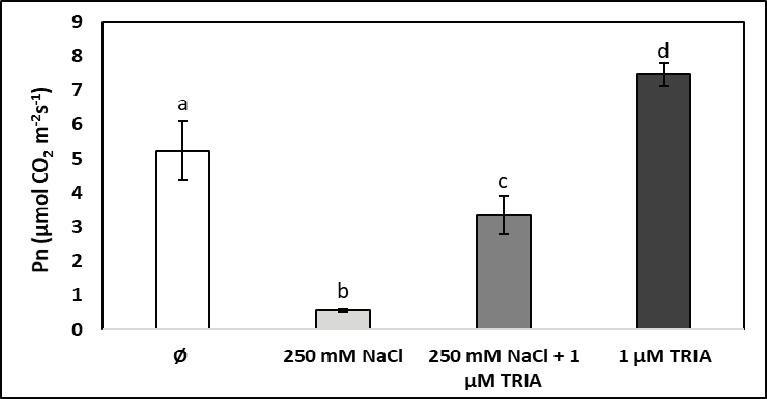
Notes: Vertical bars represent ± SE from the means (n = 5); different letters indicate statistically signifi cant differences at P < 0.05.
Figure 3. Infl uence of high salinity (250 mM NaCl), of triacontanol treatment (1 μM TRIA), and of their combination on the rate of net photosynthetic carbon dioxide assimilation (Pn) in spinach leaves (Ø stands for the control group)
D. Chlorophyll content
Chlorophylls are connected with photosynthetic light use and with carbon dioxide assimilation because they are the main plant pigments which selectively absorb, transmit, and convert light energy that subsequently will be partly used for primary biomass production. In fully developed leaves of young spinach plants grown under constant photon fl ux density of photosynthetically active radiation, the total chlorophyll content (a + b) was signifi cantly reduced by long-term exposure to high salinity. It was not modifi ed by the application of triacontanol on leaves, but when salt stress was combined with triacontanol treatment, the bioactive compound partly compensated for the reducing infl uence exerted by the presence of 250 mM NaCl in the rhizosphere (Figure 4).
Reduction of the chlorophyll content caused by salt stress may affect the acclimation of the photosynthetic apparatus to low light conditions because the number of lightharvesting pigment molecules in the antenna complexes of photosystems will be insuffi cient. Disturbances in biosynthesis and breakdown of chlorophylls caused by salt stress may have different results in different plant species and under different growth conditions. In some cases, e.g. in maize cultivars exposed for 35 days to 100 mM NaCl, an enhancement of chlorophyll content was reported in salt-stressed
plants [13], while in lettuce, canola, and wheat leaves a pronounced salt stress resulted in a signifi cant reduction of the chlorophyll content [5, 6, 16].
4
3.5
3
2.5
2
1.5
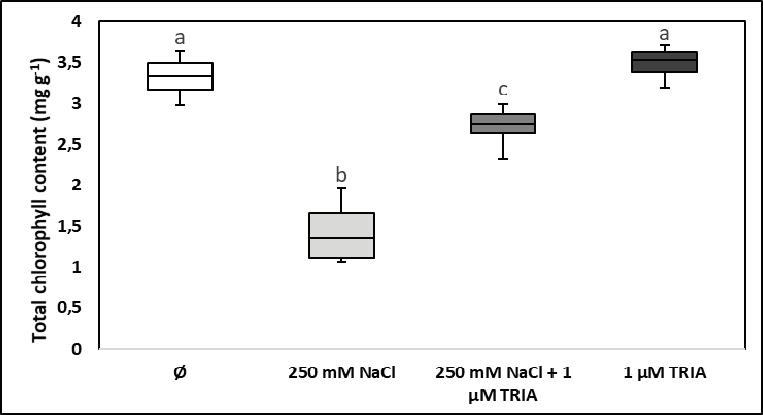
1
0.5
0
Notes: Vertical bars represent ± SE from the means (n = 5); different letters indicate statistically signifi cant differences at P < 0.05.
Figure 4. Chlorophyll content of fully developed spinach leaves grown under constant illumination and exposed to high salinity (250 mM NaCl), to triacontanol treatment (1 μM TRIA), and to their combination (Ø stands for the control group)
Carotenoids, as the other type of photosynthetic pigments associated to chlorophylls, not only have a complementary role in the absorption of photo synthetically active blue light, but they also act as effi cient protective agents against oxidative stress conditions related to the excessive formation of singlet oxygen and of alkylhydroxyl radicals [8]. Similarly to chlorophylls (even though they are synthesised through a different metabolic pathway), the total carotenoid content of spinach leaves was signifi cantly diminished by salt stress, was not modifi ed by triacontanol in non-stressed plants, and when high salinity was combined with triacontanol, the amount of carotenoids was higher than in salt-stressed plants but lower than in the control group (Figure 5).
Because they are valuable health-promoting substances in the human diet (they are potent universal antioxidants, and some of them are essential organic micronutrients for the synthesis of vitamin A), the fact that triacontanol treatment ensures a less reduced carotenoid content of spinach leaves exposed to high salinity confers a higher quality (a higher nutraceutical content) of these leaves upon consumption. Similar results were obtained when green algal cells were exposed to water pollution with cadmium, and the reduction of carotenoid content caused by the accumulation of cadmium ions in the chloroplasts could be partly compensated with 5 μM triacontanol [20]. Some other bioactive compounds (e.g. vitamin B1, vitamin C, vitamin U) could also alleviate the adverse infl uence of salt stress on the carotenoid pigment content of leaves [2, 5, 8].
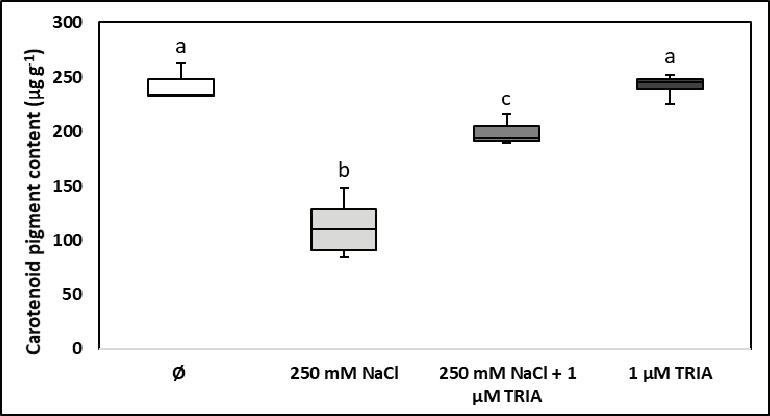
Notes: Vertical bars represent ± SE from the means (n = 5); different letters indicate statistically signifi cant differences at P < 0.05.
Figure 5. Infl uence of high salinity (250 mM NaCl), of triacontanol treatment (1 μM TRIA), and of their combination on the carotenoid pigment content of spinach leaves (Ø stands for the control group)
4. Conclusions
Triacontanol as a natural bioactive compound stimulates the growth of spinach and alleviates several negative metabolic effects of high salinity, enhancing physiological processes that result in better stress tolerance. Adverse effects of salt stress on shoot fresh biomass, on net carbon assimilation rate, on the effective quantum yield of photosystem II, and on the photosynthetic pigment content of leaves may be alleviated by 1 μM of triacontanol pulverized on leaves. These results may positively infl uence further research for revealing the action mechanism of triacontanol in plants, and a better understanding of its role in the enhancement of stress tolerance will enable farmers to improve spinach production in an environment-friendly manner and without any genetic manipulation, even under adverse growth conditions. The present results may also represent a starting-point to improve the content of health-promoting nutraceuticals in spinach leaves, which increases their value as leafy vegetables.
References
[1] Aranega-Bou, P., Leyva, M., Finiti, I., Garcia-Agustin, P., Gonzalez-Bosch, C. (2014), Priming of plant resistance by natural compounds. Hexanoic acid as a model. Front. Plant Sci. 5, 1–12. [2] Athar, H.-R., Khan, A., Ashraf, M. (2008), Exogenously applied ascorbic acid alleviates salt-induced oxidative stress in wheat. Environ. Exp. Bot. 63, 224–231. [3] Bartha, C., Fodorpataki, L., Martinez-Ballesta, M. C., Popescu, O., Carvajal,
M. (2015), Sodium accumulation contributes to salt stress tolerance in lettuce cultivars, J. Appl. Bot. Food Qual. 88, 42–48. [4] Filippou, P., Tanou, G., Molassiotis, A., Fotopoulos, V. (2013), Plant acclimation to environmental stress using priming agents. In: Tuteja, N, Gill, S. S. (eds.),
Plant Acclimation to Environmental Stress. New York: Springer. 1–27. [5] Fodorpataki, L., Holinka, B., Gyorgy, E. (2016), Priming with S-methylmethionine increases non-enzymatic antioxidant content of lettuce leaves exposed to salt stress. In: Asaduzzaman, M. (ed.), Controlled environment agriculture: Production of specialty crops providing human health benefi ts through hydroponics. New York: Nova Science Publ. 133–164. [6] Fodorpataki, L., Molnar, K., Tompa, B., Bartha, C. (2021), Exogenous S-methylmethionine alleviates salinity stress by modulation of physiological processes in canola (Brassica napus). Intl. J. Agric. Biol. 25, 11–19. [7] Garcia-Garcia, A. L., Garcia-Machado, F. J., Borges, A. A., Morales-Sierra, S.,
Boto, A., Jimenez-Arias, D. (2020), Pure organic active compounds against abiotic stress: A biostimulant overview. Front. Plant Sci. 11, 1–17. [8] Gill, S. S., Tuteja, N. (2010), Reactive oxygen species and antioxidant machinery in abiotic stress tolerance in crop plants. Plant Physiol. Biochem. 48, 909–930. [9] Han, S. J., Choi, I.-L., Kim, J. Y., Wang, L., Lee, J. H., Choi, K.-Y., Koo, Y. W.,
Kim, Y., Islam, M. Z., Lee, Y.-T., Kang, H.-M. (2019), Various light quality including QD-LED affect growth and leaf color of red romaine baby leaf lettuce. Not. Bot. Horti Agrobot. 47, 757–762. [10] Hasanuzzaman, M., Nahar, K., Fujita, M. (2013), Plant response to salt stress and role of exogenous protectants to mitigate salt-induced damages. In: Ahmad, P.,
Azooz, M. M., Prasad, M. N. V. (eds.), Ecophysiology and responses of plants under salt stress. New York: Springer. 25–88. [11] Islam, S., Mohammad, F. (2020), Triacontanol as a dynamic growth regulator for plants under diverse environmental conditions. Physiol. Mol. Biol. Plants 26, 871–883.
[12] Islam, S., Zaid, A., Mohammad, F. (2021), Role of triacontanol in counteracting the ill effects of salinity in plants: A review, J. Plant Growth Regul. 40, 1–10. [13] Kaya, C., Ashraf, M., Sonmez, O., Tuna, A. L., Polat, T., Aydemir, S. (2015),
Exogenous application of thiamin promotes growth and antioxidative defense system at initial phases of development in salt-stressed plants of two maize cultivars differing in salinity tolerance. Acta Physiol. Plant. 37, 1729–1741. [14] Lichtenthaler, H. K., Buschmann, C., Knapp, M. (2005), How to correctly determine the different chlorophyll fl uorescence parameters and the chlorophyll fl uorescence decrease ratio Rfd of leaves with the PAM fl uoro meter.
Photosynthetica 43, 379–393. [15] Lichtenthaler, H. K., Welburn, A. R. (1983), Determination of total carotenoids and chlorophylls a and b of leaf extracts in different solvents. Biochem. Soc.
Trans. 11, 591–592. [16] Mahboob, W., Khan, M. A., Shirazi, M. U., Asma, S. F. (2019), Seed priming modulates germination potential, osmoprotectants accumulation and ionic uptake in wheat seedlings under salt stress. Intl. J. Agric. Biol. 22, 594–600. [17] Maxwell, K., Johnson, G. N. (2000), Chlorophyll fl uorescence – A practical guide. J. Exp. Bot. 51, 659–668. [18] Oh, M.-M., Carey, E. E., Rajashekar, C. B. (2009), Environmental stresses induce health-promoting phytochemicals in lettuce. Plant Physiol. Biochem. 47, 578–583. [19] Singh, A., Rajput, V., Rawat, S., Singh, A. K., Bind, A., Singh, A., Chernikova, N.,
Voloshina, M., Lobzenko, I. (2020), Monitoring soil salinity and recent advances in mechanism of salinity tolerance in plants. Biogeosyst. Techn. 7, 66–86. [20] Tompa, B., Jakab, K., Fodorpataki, L. (2020), Triacontanol compensates for cadmium toxicity effects on growth and photosynthesis. Anal. Univ. Or.,
Fasc. Biol. 27, 123–128. [21] Toscano, S., Trivellini, A., Cocetta, G., Bulgari, R., Francini, A., Romano, D.,
Ferrante, A. (2019), Effects of preharvest abiotic stresses on the accumulation of bioactive compounds in horticultural produce. Front. Plant Sci. 10, 1–17. [22] Zaid, A., Asgher, M., Wani, I. A., Wani, S. H. (2020), Role of triacontanol in overcoming environmental stresses. In: Roychoudhury, A., Tripathi, D. K. (eds.), Protective chemical agents in the amelioration of plant abiotic stress:
Biochemical and molecular perspectives. New Delhi: John Wiley & Sons. 491–509. [23] Zhang, R. H., Li, J., Guo, S. R., Tezuka, T. (2009), Effects of exogenous putrescine on gas-exchange characteristics and chlorophyll fl uorescence of
NaCl-stressed cucumber seedlings. Photosynth. Res. 100, 155–162.




